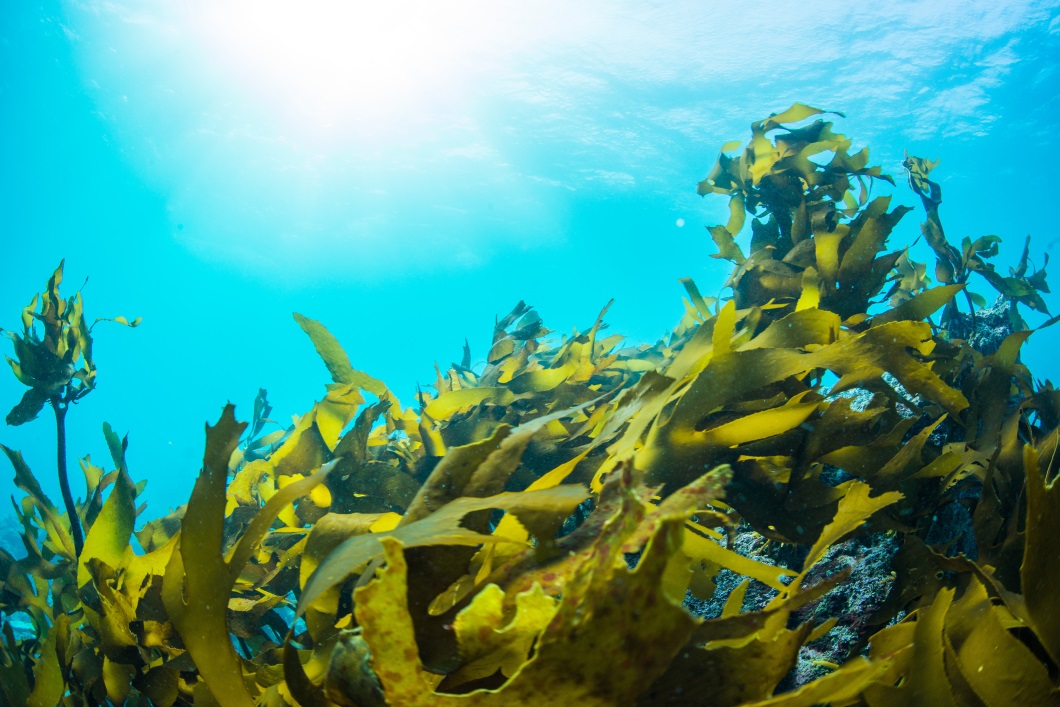Cytokine and chemokine reprogramming has a direct impact on the functional changes occurring in M1 and M2 macrophages, with CCL22, a chemoattractant, being produced mainly by M2 macrophages activated by the Th2 cytokines IL-4 and IL-13. The chemokine CCL22 is highly expressed in various malignancies, including ovarian tumors, colorectal tumors, breast cancer, hepatocellular carcinoma, and follicular lymphoma, and has been shown to be associated with poor prognosis.
Fucoidan, however, is a unique polysaccharide derived from marine sources like brown algae. It contains fucose and is sulfated. Numerous studies have shown that it has antitumor effects that are primarily manifested as inhibition of tumor cell proliferation and migration, and promotion of lymphocyte proliferation and secretion of antitumor cytokines. The specific effects of fucoidan on the characteristics of different macrophage subtypes are not completely known.
Therefore, I would like to introduce the research, “Fucoidan inhibits CCL22 production through NF-κB pathway in M2 macrophages: a potential therapeutic strategy for cancer” by Jia Sun et al., in this blog.
The study began by examining the influence of fucoidan on macrophages, specifically focusing on the M2 subtype. Notably, the study found no significant differences in the morphology of M0, M1, or M2 macrophage populations treated with fucoidan compared to untreated populations. The mRNA expression of several cytokines and surface markers of M1 and M2 were performed by quantitative real-time PCR. The results showed that the mRNA expression of TNF-α, IL-1β, and IL-6, which are described as M1 markers, tended to be higher in M1 than in M0 and/or M2-like macrophages. The mRNA expression of TGF-β, MRC-1, and IL-10, which are described as M2 markers, were significantly higher in M2 than in M0 and/or M1 macrophages. Fucoidan significantly affected cytokine transcription and down-regulated TNF-α, IL-1β, IL-6, TGF-β, and IL-10 in M0, M1, and/or M2-like macrophages, as shown in Figure. 1c.
Next, they analyzed the mRNA expression of six CC chemokines, CCL2, CCL3, CCL4, CCL5, CCL18, and CCL22, which are mainly expressed in macrophages. Macrophages displaying M1 or M2-like characteristics exhibited significantly higher levels of CCL2 and CCL22, which serve as markers for M1 and M2 macrophages, respectively. Fucoidan downregulated the mRNA expression of CCL2, CCL4, CCL5, and CCL22 in M0, M1, and/or M2-like macrophages. The mRNA level of CCL22 was reduced approximately 50-fold in fucoidan-treated THP-1-derived M2 macrophages. Fucoidan decreased the CCL22 secretion in the supernatant of M2-like macrophages after 48 hours of polarization. Moreover, after M-CSF treatment, monocytes differentiated into M0 macrophages in vitro. Then, when stimulated by IL-4 and IL-13, M0 differentiated into the M2 subtype. Fucoidan significantly reduced the expression and extracellular concentration of CCL22. By studying polarized M2-like macrophages, the expression of CCL22 was significantly upregulated by IL-4 and IL-13. Among them, IL-4 played a major role in upregulating the expression and secretion of CCL22, and IL-13 could exert a synergistic effect. The results indicated that fucoidan effectively reduced CCL22 levels in polarized and polarized M2 macrophages.
This study looked into how fucoidan affects M2 macrophage function by examining tumor cell migration and T lymphocyte recruitment, processes influenced by macrophage-produced CCL22.
CD3+CD4− T cells were more abundant in the cells recruited by the supernatant of fucoidan-pretreated M2 macrophages. In comparison, the percentage of CD3+CD4+ T lymphocytes was low under chemotaxis with the supernatant of fucoidan-stimulated THP-1-derived M2 macrophages (Fig. 2c). Fucoidan pretreatment of THP-1-derived M2 macrophages reduced the number of CD4+ T lymphocytes recruited by the M2-conditioned medium (Fig. 2d). Fucoidan-pretreated THP-1-derived M2 macrophage medium recruited significantly fewer CD4+CD25+FoxP3+ (Treg) cells than control medium. The addition of CCL22 neutralizing antibody reduced the preferential recruitment of CD4+CD25+FoxP3+ cells by the control medium. Also, rhCCL22 preferentially recruited CD4+CD25+FoxP3+ cells in fucoidan-pretreated THP-1-derived M2 macrophage supernatants (Fig. 2e), supporting the idea that CCL22 selectively recruits Tregs.
In order to assess the mechanism of CCL22 downregulation by fucoidan in THP-1-derived macrophages, the phosphorylation status of p38-MAPK, AKT, and p65-NF-κB was examined. Western blot analysis showed that fucoidan stimulation in macrophages upregulated the phosphorylation of p38-MAPK. At the same time, the phosphorylation of AKT and p65-NF-κB was inhibited. The inhibition of NF-κB activity was further confirmed through immunofluorescence microscopy analysis. We then used inhibitors of PI3K, p38-MAPK, and NF-κB to analyze their effects on CCL22 expression and secretion. However, by coincidence, we found that wortmannin (a PI3K-AKT pathway inhibitor) could significantly increase CCL22 expression and secretion, while the p38-MAPK pathway inhibitor SB203580 and the NF-κB pathway inhibitor BAY 11-7082 could significantly downregulate CCL22 expression and secretion. Western blotting experiments demonstrated that wortmannin, a PI3K-AKT pathway inhibitor, led to increased phosphorylation of p65-NF-κB and p38-MAPK. SB203580, an inhibitor of the p38-MAPK pathway, simultaneously inhibited the phosphorylation of p65-NF-κB and AKT. Similar NF-κB activation.
These findings highlight fucoidan’s potential as a novel immunotherapy agent, as it can suppress CCL22 in M2 macrophages via NF-κB-dependent transcription, thereby inhibiting tumor cell migration and lymphocyte recruitment.


Source: Sci Rep. 2016; 6: 35855. doi: 10.1038/srep35855
